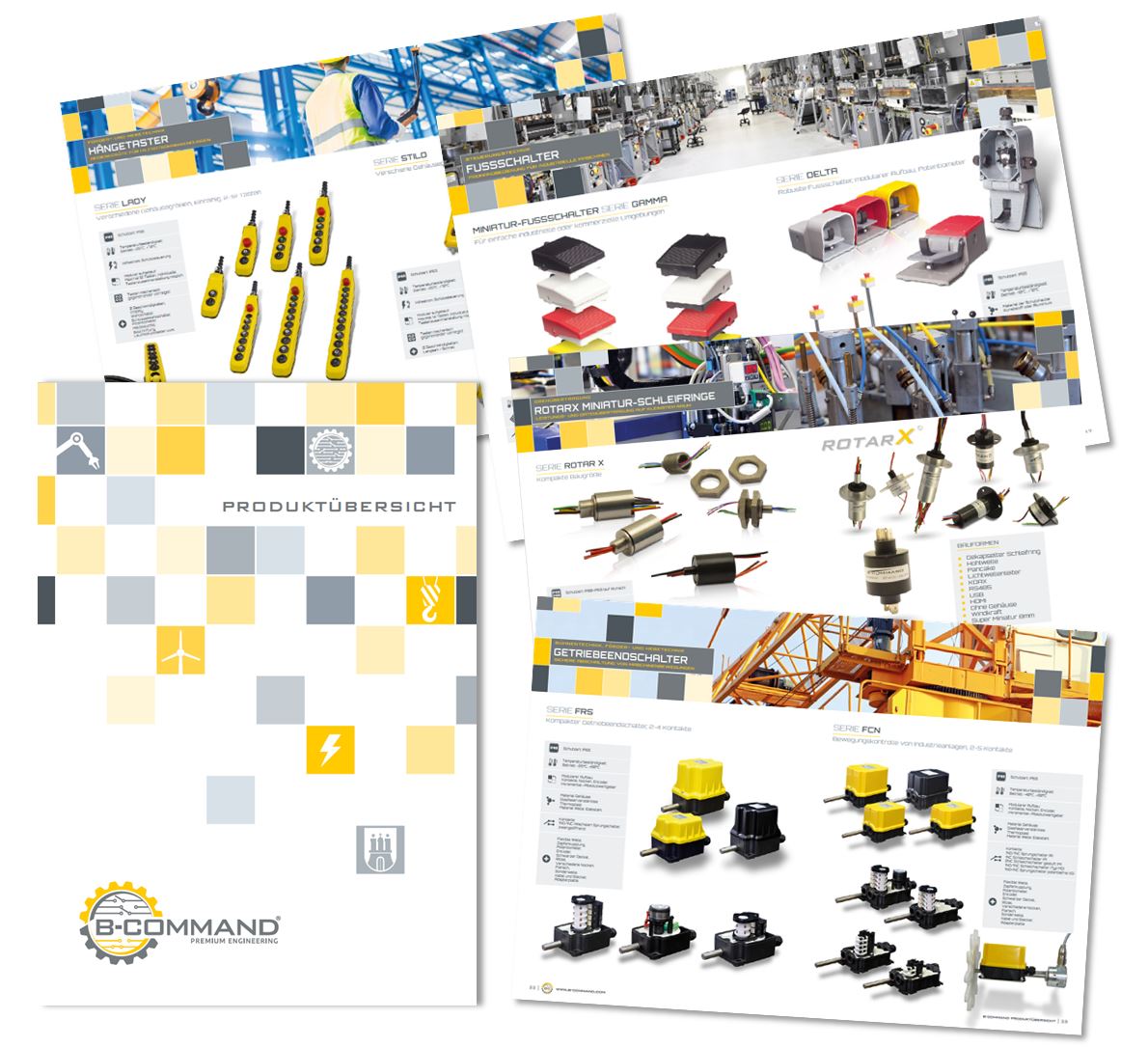Mechanical Specifications
- Plastic or metal housing
- Flexible cable routing, multiple cable outlets
- Protection class: IP65 (plastic), IP66 (metal)
- Approvals: UL, CSA, EAC, CCC
- 7 different actuators
- Adjustable / rotatable actuating heads
Electrical Specifications
- Snap-action or slow-action switch, up to 3 switching contacts
- Forced guided contacts
- Optionally with cable and M12 plug
- Screw terminals on contacts
- AC15: 10A/24V, 6A/120V, 4A/400V
- DC13: 6A/24V, 0,55A/125V, 0,4A/250V
Safety limit switch with separate actuator
The limit switches with separate actuator are characterised by their user-friendly handling and a number of specific features:
- They are capable of switching high currents, with a conventional thermal rating of 10 A.
- Pulling the actuator out of the limit switch reliably opens the “normally closed” contacts.
- The contact blocks ensure positive opening of the “normally closed” contacts.erlässig geöffnet.
- The contacts are electrically separated from each other.
- The actuation positions are precise and consistent.
- The limit switches are insensitive to electromagnetic interference.
These specific features make the limit switches ideal for monitoring and protecting industrial machinery. In particular, they are used in situations where the downtime is shorter than the time needed to reach the hazardous area. They can be used on movable or rotating guards such as covers, enclosures, doors and grilles. Their use helps to protect people working with dangerous machinery by opening the control circuit. When opening the movable guard, pulling out the actuator causes the machine drive to stop immediately.
The limit switches meet the requirements of the European directives (Low Voltage Directive and Machinery Directive) and comply with European and international standards.
The safety limit switches of the plastic series are made of glass-fibre reinforced thermoplastic material (UL94-V0) and offer double insulation and a degree of protection IP65. The metal series safety limit switches are made of lacquered zamak and have IP66 protection.
Adjustment of the actuator head 0-360°.
The safety limit switches with separate actuator can be manufactured with different options for rotating the actuating head. The actuating head is rotated at 90° intervals and can then be fixed in the new position (option 090A,B,C,D). Alternatively, a completely rotatable head is available, which allows the actuation position to be adjusted precisely to the degree (option 360Z). This has the advantage that the limit switch can be adapted exactly to the conditions on site.
Horizontal or vertical insertion of the actuator
Our safety limit switches offer the greatest possible flexibility in adapting to the conditions at the installation site. This way, the actuator can also be inserted horizontally or vertically. A corresponding adjustment can be made to the actuating head as shown in the diagram.
Various actuators
Within the scope of individual adaptation to the specifications of the area to be protected, the actuator can also be flexibly adapted. Different actuator designs are available, straight or angled. Vibration-absorbing actuators are also available.
Explanation snap-action switch vs. slow-action switch

P0 Rest position – position of the switch actuator when no external force is acting on it.
PA Operating position – position of the switch actuator under the action of force F1 when the contacts leave their free initial position.
PP Positive opening position – position of the switch actuator from which positive opening is guaranteed.
L Max. Stroke position – Maximum permissible stroke position of the switch actuator under the effect of a force F1.
PR Release position – position of the switch actuator in which the contacts return to their free initial position.
C1 Flow path – distance between the free position P0 and the operating position PA.
CP Positive opening travel – minimum travel of the switch actuator from the rest position to ensure positive opening of the break contact.
C2 Overtravel – distance between the operating position PA and the maximum stroke position L.
CL Maximum stroke – distance between the rest position P0 and the maximum stroke position L.
C3 Differential travel (C1-C4) – travel difference of the switch actuator between the operating position PA and the release position PR.
C4 Release distance – distance between the release position PR and the free position P0
Hinweis: Bei Schleichkontakten ist C3 = 0, C1-1 = Vorlaufweg des Kontakts 21-22, C1-2 = Vorlaufweg des Kontakts 13-14







